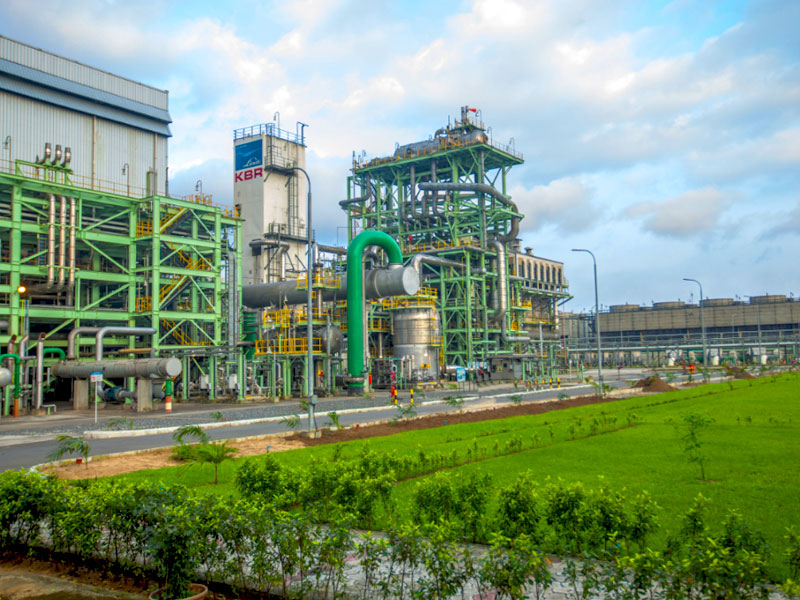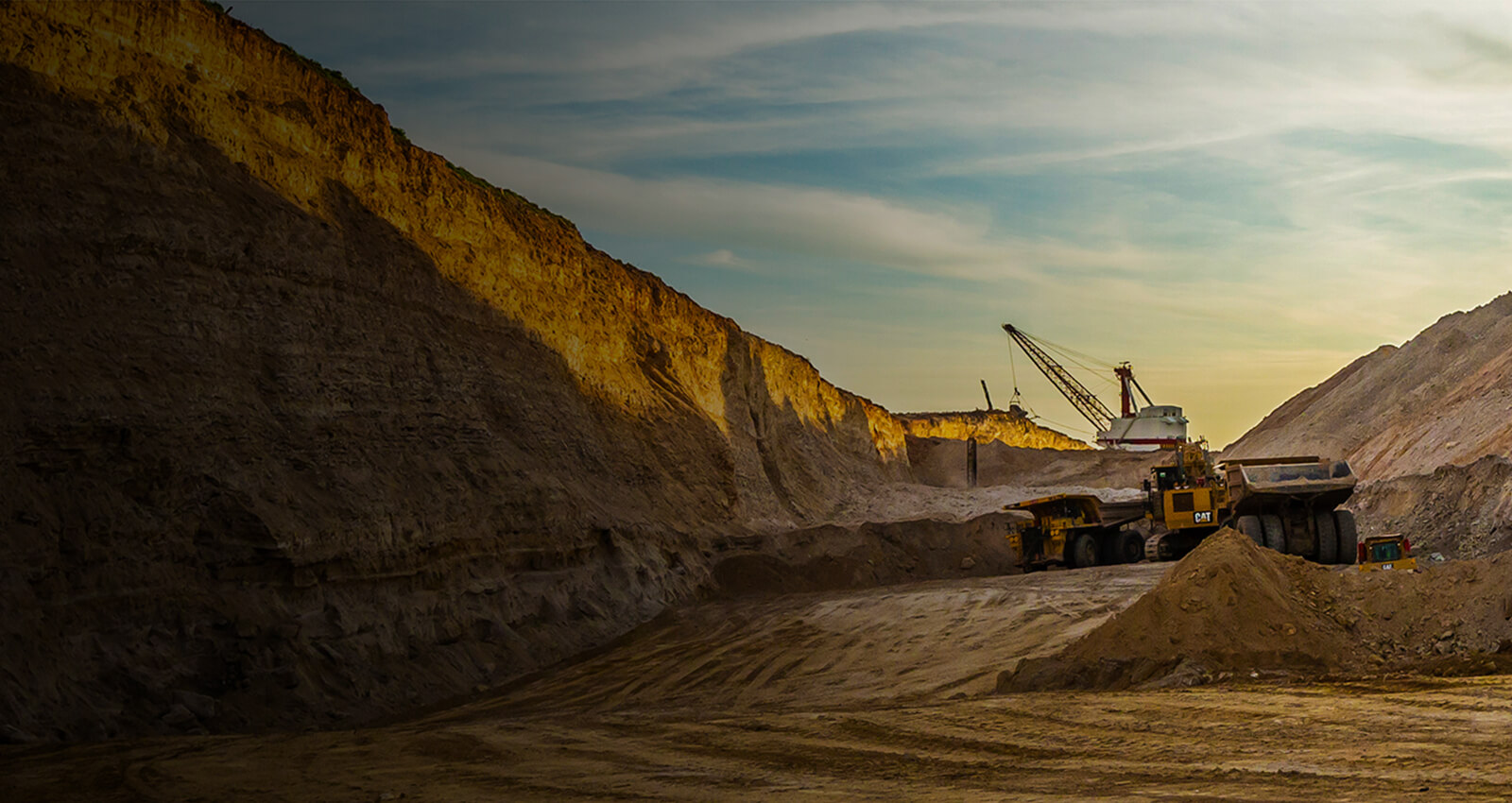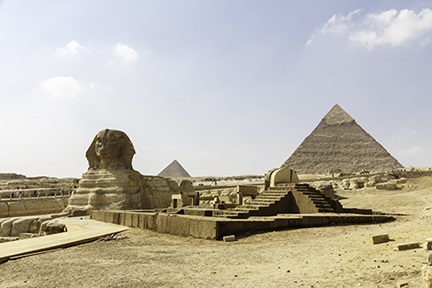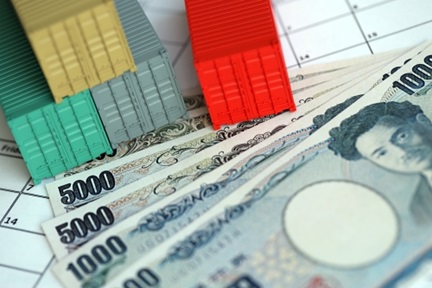How can Asian fertiliser producers craft a Win-Win Investment strategy for Africa?
A case for shifting from exporting fertilisers produced in Asia for Africa to manufacturing in Africa for Africa
By Michael Tanchum
 Photo credit: Indorama Corporation
Photo credit: Indorama Corporation
Africa’s population boom, particularly its youth bulge, has prompted international businesses to relocate factories to the continent, finding a competitive advantage in the greater availability of affordable labour, as well as affordable land and energy. According to United Nations’ projections[1], one-quarter of the world’s population will live in Africa by 2050, becoming home to 2.5 billion people. Already by 2030, Africa will be home to 42% of the world’s young people.[2] Yet the economic blessing of Africa’s youth bulge could turn into a curse if food security on the continent is not adequately ensured. Currently, an estimated 282 million Africans are undernourished.[3] Ultimately, Africa’s population boom means that Africa’s prosperity depends on expanding the output of the continent’s agricultural sector, which in turn depends on the greater availability of affordable fertiliser. For Asian fertiliser companies, market opportunities exist for those companies willing to locate production facilities on the continent. These opportunities are based on a win-win, Africa-Asia business synergy that helps Asian nations enhance the security of their supply of mineral nitrogen fertilisers while expanding the production of these fertilisers on the African continent. Singapore, India, and more recently China, are leading this trend which, is likely to expand with the imminent advent of large-scale green ammonia production in Africa, using the continent’s abundant renewable energy resources.
Fertiliser and Food Security: The Singapore-Nigeria Connection
Several African governments are engaged in massive infrastructure building programs to increase their domestic agri-food production, often with financial support from international institutions.[4] Increasing fertiliser production in Africa, particularly in Sub-Saharan Africa (SSA), is the key to enabling Africa to feed itself. In 2021, fertilizer use in SSA averaged 22.6 kg per hectare[5], compared to a global average of 139.8 kg per hectare.[6] Although several countries on the continent possess the raw materials required for fertiliser production, the agriculture sectors in most African countries are characterized by low fertiliser use and consequently low crop yields. The same economic logic that is driving the relocation of manufacturing Africa is even more compelling in the case of fertiliser production.
The Singapore-headquartered conglomerate Indorama has been a leader among Asian fertiliser firms investing in Africa. The company began fertiliser production operations in Nigeria, home to over 225 million citizens and the largest natural gas reserves and the second largest oil reserves on the continent, in 2016. Although much of its workforce is dependent on farming for its livelihood agriculture accounts for less than 25.6% of Nigeria’s GDP.[7] With food inflation running at almost 30%[8], Nigeria’s president declared a national state of emergency on food security in July 2023.[9] The number of Nigerians experiencing high levels of food in security is forecast to reach 26.5 million in 2024.[10] Through programs like Nigeria’s National Strategy for Wheat Self-Sufficiency and its Presidential Fertiliser Initiative (PFI), the government is seeking long-term solutions beyond relief aid. Nigeria’s fertilizer consumption is a paltry 18.6 kg per hectare.[11] At the same time, Nigeria’s ammonia and urea exports – the former is produced from natural gas and the latter is produced from the former – account for the country’s largest non-oil export sector, representing 32.87% of non-oil exports.[12] Indorama, through its Nigerian subsidiary, Indorama Eleme Fertilizer & Chemicals Limited (IFL), is responsible for about 71% of Nigeria’s export revenues from its urea/fertiliser sector.[13]
IFL operates the world’s largest single train urea plant in Eleme region of Nigeria’s oil refining city of Port Harcourt.[14] After commissioning this urea line in 2016, IFL commissioned a second line in 2021.[15] With a combined annual capacity of 2.8 million tonnes, IFL is the largest private urea producer in Africa.[16] IFL’s complex also includes ammonia production, a gas pipeline to transport natural gas to the facility, and an export terminal at Onne-Eleme Port to export urea to international markets.[17] Much of the urea exports were delivered to the lucrative Brazilian market, with Indorama taking advantage of the comparative short transit time between Nigeria and the South American agricultural giant. Indorama is currently seeking to develop a third fertilizer line, with the US$1.3bn project raising annual urea production capacity to 4.2 million tonnes.[18] In April 2024 it secured US$1.25bn for the expansion of its Nigerian facility. Once fully operational it is expected to significantly enhance Nigerian fertiliser exports.
Although Urea is used as a nitrogen-release fertiliser, it is insufficient by itself to create an industrial scale agricultural sector. Industrial-scale production requires mineral nitrogen fertilisers, the primary mineral component of which is phosphorus, as all plant life requires phosphorus to grow. The most commonly used phosphorus nitrogen fertiliser is diammonium phosphate (DAP). It is composed of 46% phosphorus and 18% nitrogen and produced from combining phosphoric acid and ammonia, with the latter being the source of the nitrogen. In seeking to expand its fertiliser operations in West Africa, Indorama has sought to secure phosphate supplies and phosphoric acid production facilities. In 2014, Indorama acquired Industries Chimiques du Senegal (ICS), the largest producer of phosphate fertilizer products in Sub-Saharan Africa.[19] In 2022, Senegal’s phosphate mining output was 1.6 times greater than South Africa’s output.[20] ICS facilities consist of the Taiba phosphate mine, two plants to produce phosphoric acid with a combined annual capacity of 600,000 tonnes, and fertiliser plant capable of producing 250,000 tonnes of DAP and nitrogen-phosphorus-potassium (NPK) fertilisers per year.[21]
Asian Agribusiness and African Phosphates: Securing Fertiliser Supplies on Two Continents
Unlike other finite resources such as fossil fuels, there is no alternative to phosphorus. Asian fertiliser producers, particularly those in India, need to secure supplies of phosphate ore or phosphoric acid. With about 46 million tonnes of phosphate rock reserves, India produces very little of the phosphate it needs. For perspective, its phosphate output in 2022 was less than that of Togo - the third largest producer in SSA. The phosphate mine production of Senegal, Sub-Saharan Africa’s largest producer, exceeded India’s by 98%.[22] In 2022, following in Indorama’s footsteps, Indian fertilizer firm Coromandel acquired 45% equity stake in Senegalese rock phosphate mining company Baobab Mining and Chemicals Corporation.[23] Coromandel also owns a 14% stake in South Africa’s vertically integrated phosphate producer Foskor[24], which, in addition to its mining operations, owns a phosphoric acid production plant with an annual capacity of 720,000 tonnes.[25]
North Africa is the world’s richest region for phosphates. Tunisia is home to the world’s third largest phosphate reserves and Coromandel owns a 15% stake in the Tunisian-Indian Fertilisers (TIFERT) joint venture to produce phosphoric acid in Tunisia for export to India. With 70% owned by Compagnie des phosphates de Gafsa and Groupe Chimique Tunisien (CPG-GCT) as well as 15% by Gujarat State Fertilisers and Chemicals Ltd, TIFERT is intended to produce 360,000 tonnes of phosphoric acid annually, with the offtake equally shared by the two Indian stakeholders. During the decade since the 2011 'Jasmine’ revolution Tunisian phosphate production never surpassed 35% of capacity due to political instability and civil unrest.[26] While 2022 witnessed an important uptick in Tunisia’s phosphate production and supply to TIFERT[27], diversifying phosphate suppliers is a strategic imperative for New Delhi to ensure the resiliency of India’s fertiliser supply chain and the country’s food security which depends on that supply chain.
Egypt, which home to the second largest phosphate reserves in the world, is a potential investment partner for India and other Asian companies. It is one of the three biggest natural gas producers in Africa and has the eighth largest phosphate mine output in the world.[28] Prior to the 2023 economic crisis that saw a reduction of natural gas output,[29] Egypt was the world’s seventh largest ammonia producer and the world’s sixth largest urea producer.[30] In 2022, Cairo reported that it produced 4m tonnes of phosphate fertiliser in addition to phosphate mining operations.[31] Indorama is in the lead among Asian companies seeking to invest in Egypt’s fertiliser sector. After signing a memorandum of understanding with the Sovereign Fund of Egypt in 2023 to study investment opportunities in Egypt[32], Indorama formally proposed establishing a phosphate fertilizer factory. A series of meetings between the relevant Egyptian ministers and Indorama has taken place, as Cairo works on developing an appropriate incentives package and Indorama works on preparing a feasibility study.[33]
 Photo credit: OCP Group
Photo credit: OCP Group
Morocco sits on 73% of global phosphate reserves and its state-linked phosphate mining and fertiliser producer OCP is the world’s biggest producer of phosphate and the fourth largest fertiliser exporter. It offers tailor-made fertilizers that meet the specific needs of Indian farmers.[34] In 2023, OCP signed a tripartite agreement with Indian fertiliser producers and the Government of India to provide for up to 700,000 tonnes of Triple Super Phosphate (TSP), a phosphate-based fertilizer that has the highest phosphate content found in nitrogen free granular fertilizers and can be tailored for the Indian soil, as well as a million tonnes of DAP.[35] In the late 1990s, India’s Chambal Fertilisers and Chemicals Limited established a joint venture with OCP for phosphoric acid production named Indo Maroc Phosphore SA (IMACID) at Morocco’s Jorf Lasfar Port to ensure supplies to Chambal’s fertilizer operations in India. In 2005, India’s Tata Chemicals invested in IMACID to become a one-third equity stake holder along with Chambal and OCP.[36] IMACID produces 1,400 tonnes per day of phosphoric acid.[37]
Despite being the world’s largest producer of phosphate ore, China has also been looking to invest in phosphate and fertiliser production in North Africa, specifically Algeria - home to the fourth largest phosphate reserves in the world. In 2022, China’s Wuhuan Engineering Co. Ltd. and Yunnan Tian’An Chemical Co. Ltd., signed a US$7bn joint venture agreement with Asmidal, a subsidiary of Algeria’s national oil company Sonatrach, and the Algerian mining company Manal to create the Algerian Chinese Fertilizers Company (ACFC) to construct Algeria’s first integrated mining and fertilizer production complex.[38] The ACFC project, which appears to be a revamping of the 2018 US$6 billion the Algerian parties signed with China’s CITIC Construction[39], involves phosphate mining, chemical processing, and fertilizer manufacturing.
Beyond food security, Asian interest in African phosphates is now also being driven by a new demand pressure coming from electric vehicle (EV) battery manufacturing. A growing global trend among EV manufacturers is to replace nickel-manganese-cobalt (NMC) lithium-ion batteries with lithium iron phosphate (LFP) batteries, substituting expensive cobalt and nickel as well as manganese for relatively cheaper phosphate and iron.[40] In addition to being used to make phosphorus nitrogen fertilizers, phosphoric acid is also the input to make iron (II) phosphate, an iron salt of phosphoric acid, that then is used to make LFP batteries. China is the global powerhouse of EV battery manufacturing and several of its leading EV battery firms have recently invested in building LFP battery manufacturing plants in Morocco.[41] Manufacturers of LFP batteries in Morocco could enjoy a cost advantage of up to 70% per kilogram over manufacturers of NMC lithium-ion batteries.[42] As more of the global production of phosphate ore and phosphoric acid is consumed by the EV battery manufacturing, there will be even greater incentive for Asian fertiliser firms to develop phosphate mining and phosphoric acid production in Africa.
Asian Fertiliser Firms Can Learn from OCP’s Win-Win Africa Strategy
The OCP Group of Morocco already has a 65% share of the phosphate-based fertiliser market in Africa. As food security becomes a priority it could grow further. The phosphate-mining and fertiliser giant not only nets the Kingdom more than US$5bn a year through exports but has also invested in mineral nitrogen production facilities across SSA. It is also assisting Ghana, Rwanda, Cameroon and others map soil fertility. Such a win-win strategy means that fertilisers produced at OCP facilities are not only customised for local soil conditions but also create jobs and improve agriculture productivity. Working with Nigeria’s Presidential Fertiliser Initiative, for instance, OCP is constructing a US$1.4bn ammonia and fertiliser plant[43] with the aim of tripling fertiliser supplies to Nigeria from 1 million tonnes to 3 million tonnes over a period of five years.[44] With an annual production capacity of 750,000 tonnes of ammonia and 1 million tonnes of fertiliser, the facility would export ammonia to Morocco’s plant in Jorf Lasfar[45], while Morocco would supply phosphoric acid to make DAP and NPK fertilizers for Nigeria's domestic market.[46]
To service West African fertiliser demand beyond Nigeria, OCP is developing a US$1.3bn fertiliser production complex in Ghana, in which Moroccan phosphorus inputs will be combined with ammonia derived from Ghanaian natural gas.[47] Producing ammonia, urea, and DAP, the fertiliser plant in Ghana will have annual fertiliser production capacity of 1 million tonnes.[49] As the size of Ghana’s population is only 15% that of Nigeria’s population, OCP is intending to use output from the Ghanaian plant to export fertilisers to other West African countries. To service fertiliser demand in the wider East Africa region, OCP is building Africa’s second largest fertiliser production complex in Ethiopia. The US$2.4bn initial development phase will have an annual production capacity of 2.5m tonnes of urea, NPK, and nitrogen-phosphorus-sulphur fertiliser on the way to 3.8 million tonnes per year upon the completion of the US$1.2bn second development phase.[49]
A Green Future for African Fertiliser
While Indorama’s acquisition of a fertiliser plant in Senegal capable of producing 250,000 tonnes combined of DAP and NPK per year was a step in the right direction, Asian fertiliser firms would benefit from emulating OCP’s example and develop mineral nitrogen fertiliser production facilities in Africa that could service growing demand in Africa while helping to ensure the security of fertiliser supplies in Asia. Global green energy transition provides further strategic incentive for Asian fertiliser firms to locate production facilities in Africa as the continent is poised to become the world’s leading green ammonia producing region. While most fertiliser is produced from ammonia derived from natural gas, green ammonia is derived from green hydrogen which is produced using renewable energy. Africa has an estimated potential to produce US$1.06trn worth of green hydrogen by 2035, almost all of which will be traded as green ammonia.[50]
Using locally produced green ammonia will make African fertiliser production even more cost-effective in addition to increasing its sustainability and insulating it from natural gas supply shocks. In 2023, OCP announced its plans to construct its own green ammonia plant to replace its annual import of US$2bn of natural gas-derived ammonia.[51] In addition to Morocco and Egypt, which were Africa’s first movers in the development of green ammonia plants, Mauritania and Namibia are emerging as SSA’s green ammonia production powerhouses. When Mauritania’s three green hydrogen megaprojects under development become operational, Mauritania will be able to product upwards of 19 million tonnes of green ammonia annually.[52] Namibia aims to produce 10-12 million tonnes of green ammonia annually and is on track to reach 1-2 million tonnes annually by 2030.[53] Namibia could also emerge as a southern African green ammonia export hub though the addition of the smaller quantities of green ammonia slated to be produced by plants under development in neighbouring South Africa. In 2023, Kenya embarked on twinned green ammonia and fertiliser production projects, in which the country’s geothermal energy will power the green ammonia production that will be then supplied to the new fertiliser plant to achieve import replacement with locally produced green fertiliser.
Possessing vast green energy resources, most of the world’s uncultivated arable land, the world’s fastest growing workforce, the expansion of African agri-food production will shift patterns of global agribusiness trade flows. African agri-food production will not only feed the continent but will become an increasingly vital component of global food security. The geopolitical future of African agribusiness begins with fertiliser, creating market opportunities for Asian firms willing to develop fertiliser production capacity on African soil. By doing so, Asian firms can cost efficiently enhance the security of supply of mineral nitrogen fertilisers for Asian markets while ensuring the availability of these fertilisers in African markets. Based on a win-win business synergy, Asian fertiliser investment in Africa can help ensure the security of fertiliser supply chains on both continents.
Professor Michael Tanchum is a research fellow with NTU-SBF Centre for African Studies, a non-resident fellow with the Middle East Institute's Economics and Energy Program and teaches at Universidad de Navarra. You can follow him on Twitter @michaeltanchum. The author would like to thank Maria Victoria Andarcia for her research assistance.
References
[27] https://en.africanmanager.com/tunisia-2-8-million-tons-of-phosphate-produced-until-end-september/


.tmb-listing.jpg?Culture=en&sfvrsn=8636ce67_1)





